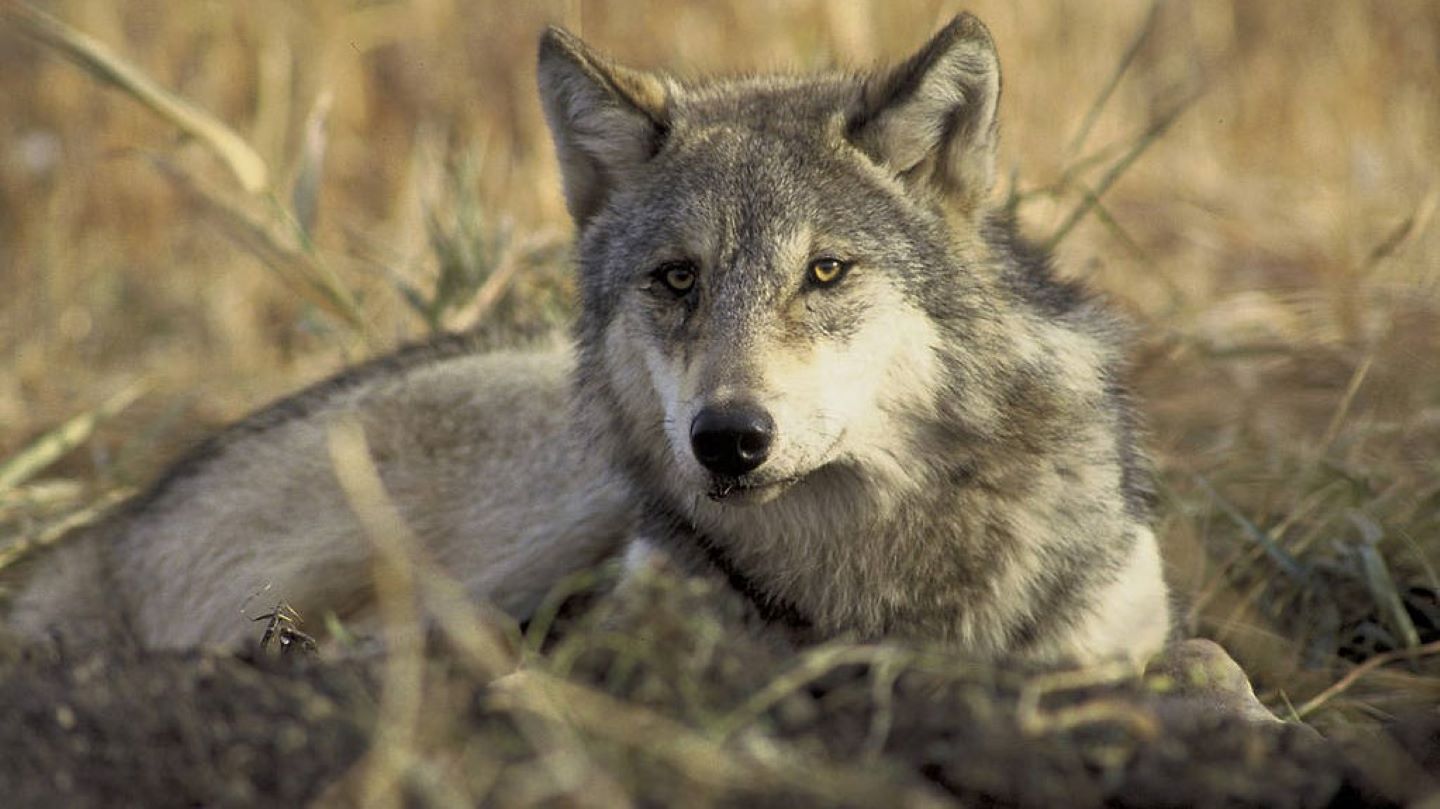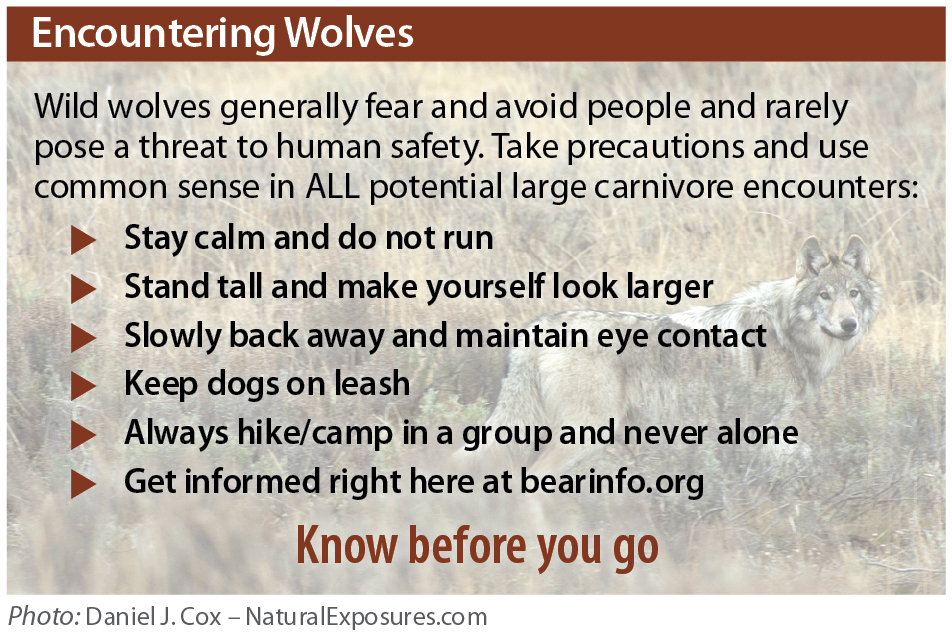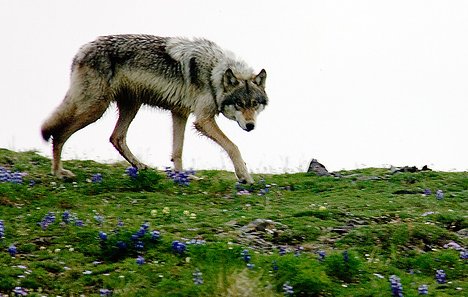
Gray Wolf Safety
Wolves are extremely wary of humans and not aggressive toward them by nature. Wolf attacks are the rarest of all large predator attacks. While the chances of seeing wolves in the wild are small, sightings can provide critical information for wildlife managers. Tracks and other signs of wolves are also important clues of the presence of this elusive carnivore. Respect for wild wolves will help them resume their vital role as a part of the natural ecosystems of Washington.

Evidence from a few recent cases of humans being bitten during wild wolf encounters indicates these animals may have been fed by people, thereby losing their natural fear of humans and associating humans with food. In other cases, people may have been injured while trying to break up a fight between their dog and a wolf.
In North America, where there are about 60,000 wolves, there have only been two fatalities apparently caused by wolves. It is believed that these fatalities were the result of habituated or sick wolves.
Injuries from wolves have also been extremely rare in North America. By comparison, domestic dogs in the United States are responsible for 4.7 million bites, resulting in 500,000-800,000 hospital visits and 15-20 fatalities per year.
About half of the human fatalities from wolf attacks worldwide since about 1950 have involved wolves infected with rabies. Wolves are not major carriers of rabies, but contract it from contact with other wildlife harboring the disease. The severity of sporadic attacks by rabid wolves in Europe and Asia in past centuries likely contributed to a perception brought to North America by European settlers that all wolves were violently dangerous animals. However, in the United States and Canada, interactions involving rabid wolves and humans have rarely occurred due to the low overall incidence of rabies on the continent.

Attacks by non-rabid wolves typically involve captive wolves, healthy wild wolves that became habituated to humans (with or without food being present), territorial attacks by wolves on pet dogs where the dog owner tried to intervene, defensive attacks by wolves when trapped or cornered or when den sites with pups were threatened, wolves acting as predators under unique circumstances, and wolf-dog hybrids.
Wolf-dog hybrids tend to be much more dangerous than wolves because they have been habituated to people and do not fear them. It is difficult to tell the difference between a wolf and a wolf /dog hybrid by appearance. Wolves and dogs are members of the same species, Canis lupus.
To prevent wolves from becoming habituated, people should:
- Resist the temptation to approach wolves.
- Do not entice or allow wolves to come nearby.
- Do not feed wolves or leave food outdoors, including pet food.
- Do not approach fresh wolf kills, dens, or rendezvous sites.
- Do not let wolves become comfortable near human-inhabited areas.
- Notify authorities about wolves that seem comfortable around people, seek human food, or frequent human or livestock areas. Early intervention can keep a problem from getting worse.
During a close encounter with a wolf, people should do the following:
- Stand tall and make themselves look larger.
- Calmly but slowly back away and maintain eye contact.
- If the wolf does not run away immediately, continue making yourself large, keeping eye contact, and backing away.
- Do not turn your back on the wolf or run away.
- If a dog is about to encounter a wolf, the dog should be brought to heel at the owner’s side as quickly as possible and leashed. Standing between the dog and the wolf often ends the encounter. To avoid risk of injury to yourself, do not attempt to break up a physical fight between a wolf and a dog except by using bear spray or a powerful hose from a safe distance.
- If the wolf does not retreat and is acting aggressive by holding its tail high, raising its hackles, barking or howling, you should yell and throw things at it while continuing to back away. If it attacks, fight back aggressively to show you are too dangerous to attack.
- To ensure that there is no opportunity for your child or your pet to encounter any carnivore when camping, do not allow children to play away from camp or alone. Keep them close to adults at all times. Keep pets leashed and under control.
